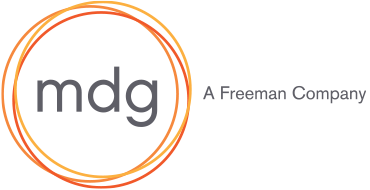
When we think of digital advertising, we picture banner ads, paid social media placement and other traditional online channels: i.e., what you see on your devices. But people also leave their homes and offices sometimes (a lot, actually). Event marketers should be considering digital out-of-home (DOOH) advertising as an effective way to reach their target audience where they are. These placements can be anywhere — on bus stop shelters and billboards, at airports and supermarkets, in train stations, etc. — allowing marketers to blanket an area heavily populated with their potential prospects or headquarters, as determined by past registration lists and demographic research, at efficiency of scale.
Here are three benefits to this traditionally used for B2C, but emerging B2B channel:
- DOOH uses similar targeting to online digital advertising. With programmatic DOOH, advertisers can use some of the same demographic and sociographic targeting used for online advertising and apply it to offline ads. This allows marketers to extend their reach beyond desktop and mobile devices. By selecting strategic locations, such as business districts or other industry events, you can reach the right people and ensure maximum exposure and engagement.
As an example, for a client focused on the entertainment and technology industry on the east coast, we deployed DOOH within a five-mile radius of their show location. Historically, we knew that on-site registration made up a large portion of total registrations. Our geo-targeted approach to DOOH — paired with geo-targeting by mobile display — helped to further increase the number of on-site registrants. DOOH alone drove over 1 million impressions. Additionally, our CPA decreased to just $13.
- DOOH can be a good value to drive new AND existing users to your site. With an estimated 70% of time spent away from home post-pandemic, DOOH ads are being viewed more than ever before, providing immense reach for CPMs as low as the single digits — more cost efficient than online video. DOOH can reinforce the message that prospects see in the ads on their computer. For instance, if you have an event that caters to health care professionals, consider DOOH ads in metropolitan areas near major hospitals.
While this is considered a strong top-of-funnel tactic to increase brand visibility, we also saw great results when deployed as a bottom-of-funnel tactic in the food & beverage space. Using a QR code, we were able to combine our DOOH ads with a mobile retargeting campaign, resulting in an increase in both overall registration and website traffic.
- You can’t block DOOH. With nearly 40% of U.S. web users employing ad-blocking technology, DOOH provides the ability to get in front of users you wouldn’t be able to otherwise. Do you have users who don’t sit in front of a computer all day? For a client that caters to professionals in the automotive aftermarket, mdg used DOOH to target prospects on their phone based on their location. An out-of-home ad can push prospects online to find the website organically or provide a direct route to the website via QR codes.
There are many reasons to embrace DOOH as part of a comprehensive marketing strategy. It’s worth looking into for your specific market and building space in your schedule and budget to test this continuously improving avenue for growth.

